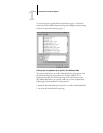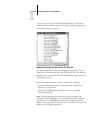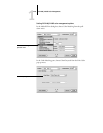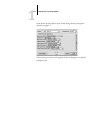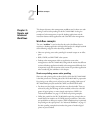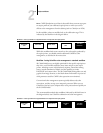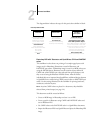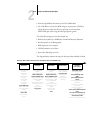
2
2-3 Simple workflows
One advantage of using ColorWise color management over desktop color
management is that your computer is spared the added processing chores;
delaying color conversions until the color data reaches the iR C2100/2100S
frees up your computer so you can continue working, and color conversions
on the iR C2100/2100S are in most cases much faster than similar conver-
sions on a host computer.
Managing most or all of your color on the iR C2100/2100S can also
eliminate the potential for undesirable color management-related conflicts,
such as iterative color conversions and inconsistent color. The iR C2100/
2100S applies global corrections to specific groups of RGB, CMYK, and
PANTONE colors to avoid such conflicts.
Finally, by sending RGB files instead of larger CMYK files from applications
to the iR C2100/2100S, network traffic is minimized and jobs are generally
printed more quickly.
ColorWise uses ICC profiles to convert colors to the copier/printer gamut or
to simulate other devices such as an offset printing press. ColorWise manages
color conversions for all users printing to the iR C2100/2100S from
Windows and Mac OS computers. It lets users follow a simple workflow with
minimal intervention using robust default settings, while giving advanced
users the control and precision they need.
The iR C2100/2100S can intelligently manage the printed appearance of
RGB, CMYK, and PANTONE colors. You can let the iR C2100/2100S
manage color for most short-run color printing jobs without adjusting any
settings.
Simple workflows
Every time you print a document containing colors that were not chosen for
your specific copier/printer, those colors need to be converted, which requires
color management. Colors can be defined or modified at any stage in the
workflow. Since ColorWise is compatible with most other color management
systems, you can use the workflow most familiar to you.
This section provides examples of color workflows that should meet the needs
of most iR C2100/2100S users. For information on specific desktop
applications, see Chapters 6 through 9.



